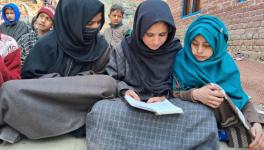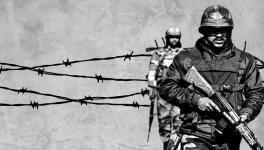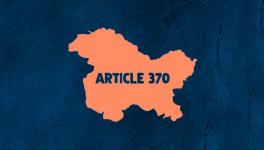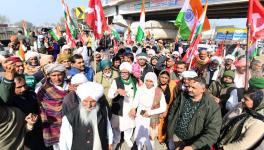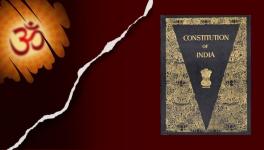Seventy One Years of AFSPA: Failed State Machinery
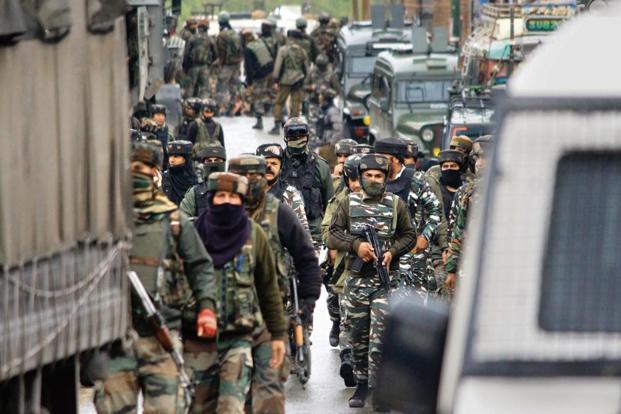
Representational Image. Image Courtesy: Livemint
This year India celebrates its 71st Republic Day. We have a constitutional democracy, but our system has still allowed the armed forces to be deployed in various regions for decades together. The battle against the Armed Forces Special Powers Act (AFSPA) is a bitter, continued one that raises serious questions before all democrats in India. The fact that AFSPA has been in force for more than 60 years after Independence and continues to be in place makes a mockery of the very essence of India’s democracy.
In July 2016, Supreme Court Justices Madan B Lokur and UU Lalit had raised some crucial questions on the infringement of fundamental rights in areas under AFSPA:
“In our opinion, it would be indicative of the failure of the civil administration to take effective aid of the armed forces in restoring normalcy or would be indicative of the failure of the armed forces in effectively aiding the civil administration in restoring normalcy or both. Whatever be the case, normalcy not being restored cannot be a fig leaf for prolonged, permanent or indefinite deployment of the armed forces (particularly for public order or law and order purposes) as it would mock at our democratic process and would be a travesty of the jurisdiction conferred by Entry 2A of the Union List for the deployment of the armed forces to normalise a situation particularly of an internal disturbance”.
Court rulings regarding AFSPA, such as the one above, do not authorise fake encounters or other atrocities by the armed forces or the state police in the country.
A failed state machinery
AFSPA is an law that gives India’s armed forces “special powers” to “restore the authority of the State” in regions notified as “Disturbed Areas”. Areas, or parts of areas, where the “normal” functioning of the state government breaks down, are declared “disturbed”. Thereafter, the area has to maintain status quo for a minimum of three months under the Disturbed Areas (Special Courts) Act, 1976.
Once invoked, AFSPA protects the armed forces during high-risk operations undertaken to counter “hostile” militancy, insurgency, or proxy wars by neighbouring countries, so as to “restore normalcy”. While it is in force, restrictions such as prohibitions on five or more persons gathering in an area, a ban on possessing firearms, and so on, are imposed. AFSPA also allows the Army to use force, including to open fire after due warning and it permits arrests based on “reasonable suspicion” as well as searches of premises without warrants if a person is perceived to be breaking a law, among other measures.
The Army does all of the above under AFSPA, which makes no provision for any legal action against the force.
It is the British government that had first promulgated the Armed Forces Special Powers, as an Ordinance in 1942, to suppress the Quit India Movement launched by Mahatma Gandhi. In 1947, the central government invoked AFSPA during Partition, to deal with internal security. In 1953, the Assam Government used AFSPA, under the Assam Maintenance of Public Order (Autonomous District) Act, in the Naga Hills to combat the Naga National Council (NNC) who were demanding independence from India. The situation could not be contained and in March 1956 the rebel Naga Nationalist Council (NNC) formed a parallel government called the Federal Government of Nagaland. To counter this, the Armed Forces Special Powers Ordinance 1958 was promulgated. Later it was replaced with the Armed Forces (Assam and Manipur) Special Powers Act, 1958, which allows state governors and administrators of Union Territories to declare the entire state or any part of it as “disturbed”. This enables the armed forces to exercise its “special” powers.
In 1958, the then Home Minister of India GB Pant had enforced AFSPA as an ordinance to replace the original ordinance of 1942, as a short term measure. This further empowered the Indian Army. It is another matter that AFSPA, supposedly a temporary law, has been around for more than 60 years which can only mean that it has failed to fulfil the intention of promulgating, enacting or enforcing it.
AFSPA beyond Assam and Manipur
The scope of AFSPA was soon extended to other states such as Meghalaya, Nagaland, Tripura, Arunachal Pradesh and Mizoram. With the Armed Forces (Special Powers) Act, 1958 in place, AFSPA was now imposed in Punjab and Chandigarh from 1983 to 1997 as a measure to counter the Khalistan separatist movement demanding a separate Sikh nation.
In Kashmir as well, AFSPA was invoked in the 1990s as a means to fight terrorism. It should be remembered that the roots of insurgency in Kashmir lie in demands ranging from self determination, to independence of Kashmir from both India and Pakistan, to Kashmir being part of Pakistan etc. The democratic reforms provided by the Indian government at the time in Kashmir did not create enough room for non-violent expressions of discontent in Kashmir. It is this failure that caused a rather dramatic increase in support for insurgents who advocated violence and/or secession from India.
The catalyst for insurgency was the disputed Assembly elections of 1987. Some legislators formed insurgent groups after these elections and this led, in 1988, to a series of intense strikes and attacks that escalated the Kashmir insurgency. It thus became one of the most intense internal security issues in India. Pakistan’s “moral and diplomatic” support to separatism in Kashmir is also important to mention in this context.
Intentions versus results
Though it was ostensibly intended to bring peace and stability in “Disturbed Areas”, AFSPA has had the opposite effect. The use and misuse of the law by the armed forces against the civilians is testified to in the scores of allegations of extra-judicial killings, fake encounters and torture levelled by its victims.
A 2016 petition by the Extrajudicial Executions Victim Families Association claims that around 1528 such executions were carried out in just Manipur by the police and security forces. The series of disappearance of Kashmiri men have given birth to the new concept of half-widows, a reference to the wives of disappeared men who have no information of their husbands’ whereabouts. It is believed that the mass graves that have been found all over Kashmir contain the bodies of these “disappeared” men. Besides this, rape as a weapon of war used by security forces to humiliate and intimidate civilians routinely goes unpunished.
In Manipur, an intense agitation was launched by civil society organisations after the death of Manorama Devi while she was in the custody of the Assam Rifles, a paramilitary force. Since the 1990s, human rights groups have been documenting incidents of sexual violence committed by army-men in Manipur. The psychological trauma experienced by victims of AFSPA due to fear, stress and uncertainty, have naturally made them vulnerable to anxiety, suicides and other post-traumatic disorders.
Consequences
When AFSPA was imposed on the North-east, there were only two insurgent groups. Today there are more than 40 such groups. Over the years, the very definition of “normalcy” in areas of the North-east and Kashmir where AFSPA has been imposed has changed significantly. Everyday struggles with fake encounters, extrajudicial killings, torture and rape seem to have become the new “normal” in such places.
How do we explain the escalation of encounters and hostilities after AFSPA was imposed? The proliferation of armed insurgencies and violence shows that AFSPA has absolutely failed to be the solution. It has not only proved to be a failed instrument of state, but has also alienated large sections of citizens from their governments, supposedly their “protectors”.
The gross human rights violations brought about by AFSPA have been admitted by governments, the judiciary and even the army. The same five-judge Supreme Court bench had said in 2016 that if “our armed forces are deployed and employed to kill citizens of our country on the mere allegation or suspicion that they are ‘enemy’ not only the rule of law but our democracy would be in grave danger.”
Many political parties at the Centre and in the states, including the Congress, the BJP and some regional political parties have promised the withdrawal of AFSPA in their manifestos. Yet, it survives through time.
Simply calling this draconian law “inhuman” is not enough. The truth is that there is a politics that sustains this Act and its use in various regions. For the army, it is an easy tool to use unrestrained liberty to exercise dominance; for state governments, it is an important means to receive additional funds from the Centre, and for the Centre, AFSPA is a veil for its failure in delivering effective governance and development for the people.
Alternatives
There are alternatives to AFSPA which could curb insurgency with people’s support. Take for example, the case of Tripura, where AFSPA was revoked in May 2015 after much deliberation between the government, insurgent groups and people. After an exhaustive review of the law and order situation the Union Home Ministry issued a notification to withdraw AFSPA in the state. Groups in Tripura, such as like the Indigenous Nationalist Party of Twipra and the Indigenous Peoples Front of Tripura had been demanding the withdrawal of the Act, which they believed was against the state’s tribal population.
For the government, anyone who opposes AFSPA may be an “anti-national”, but the ground reality is different. It for us to ponder why somebody whose relative has been killed, raped or tortured by state forces would want to be a part of mainland India? There is a pressing need to rethink why a democracy, supposedly based on the ideals of truth, justice and humanity, still has AFSPA in force to counter insurgency. More importantly, we need to raise questions about the root of citizen’s discontent towards their governments, which led to insurgency in the first place.
Get the latest reports & analysis with people's perspective on Protests, movements & deep analytical videos, discussions of the current affairs in your Telegram app. Subscribe to NewsClick's Telegram channel & get Real-Time updates on stories, as they get published on our website.












